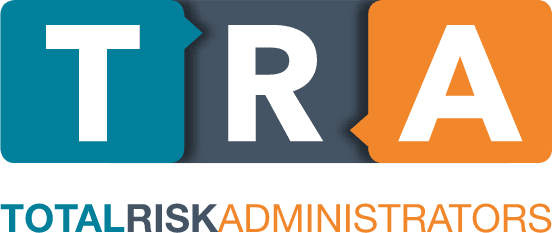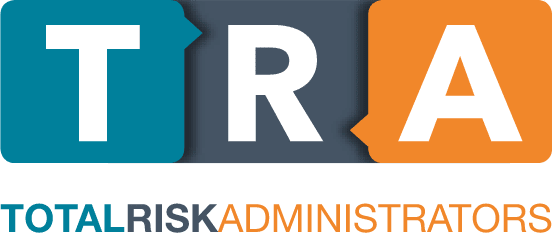Copyright: Consumer research conducted by BrandMapp on behalf of Total Risk Administrators (TRA), 2025.
“With only 19% of medically insured South Africans currently having gap cover, there are literally millions of families who could benefit from this protection but haven’t yet recognised the need.”
When you’re lying in a hospital bed recovering from surgery, the last thing you want to worry about is a massive medical bill that your medical aid won’t fully cover. Unfortunately, this scenario plays out thousands of times every year across South Africa, leaving families with unexpected medical debt that could have been easily avoided.
Gap cover has become essential financial protection for South Africans who recognise that medical aid alone is no longer sufficient. With healthcare costs rising faster than medical aid tariff rates, the gap between what your medical aid pays and what specialists actually charge continues to widen, creating dangerous financial exposure for families.
Total Risk Administrators (TRA) has been helping South African families bridge this gap for years, and our market experience reveals who needs gap cover most and why demand continues growing across all demographics.
The Reality of Medical Aid Limitations
Every medical scheme operates according to predetermined tariff rates for various procedures and treatments. These rates are set annually and often lag significantly behind actual fees charged by specialists, private hospitals, and healthcare providers. When you receive medical treatment, your medical aid covers their portion according to these tariff rates, leaving you responsible for paying the difference.
This difference isn’t a small change. Specialist consultations, surgical procedures, and hospital stays can result in thousands of rands in additional costs that come directly out of your pocket. For many South African families, these unexpected medical expenses can quickly spiral into serious financial hardship.
Understanding the South African Medical Gap Cover Market
According to our recent study covering over 35,000 South African respondents, only 19% of medical aid insured South Africans currently have gap cover protection, representing just 1.6 million people out of millions who could benefit from this essential coverage.
| Age Group | Gap Cover Adoption Rate | Key Insights |
| Under 25 | 8% | Lower health risks, tighter budgets |
| 25-35 | 14% | Starting families, increasing awareness |
| 35-50 | 19% | Higher income, growing health concerns |
| 50-65 | 22% | Peak earning years, health awareness |
| Over 65 | 33% | Learned from experience, the highest risk |
Age plays a massive role in gap cover adoption. Among people over 65, penetration reaches 33% – they’ve learned through experience how expensive medical treatment can become. In contrast, only 8% of people under 25 have gap cover, which makes sense given their typically lower health risks and tighter budgets.
Income levels offer equally compelling insights. The research identifies a monthly household income of R60,000 as a critical threshold at which gap cover adoption increases significantly. Families earning above this amount understand they have more to lose financially from uncovered medical expenses.
Gap Cover Adoption by Province
| Province | Adoption Rate | Market Opportunity |
| Western Cape | 29% | Leading adoption, mature market |
| KwaZulu-Natal | 25% | Strong awareness, steady growth |
| Eastern Cape | 16% | Significant growth opportunity |
| Gauteng | 15% | Enormous untapped potential |
| Other Provinces | 5-15% | Emerging markets |
Geographic variations are particularly telling. The Western Cape leads the way in gap cover adoption, at 29%, followed by KwaZulu-Natal at 25%. However, Gauteng shows only 15% penetration despite being South Africa’s economic powerhouse, suggesting enormous untapped potential in the country’s most populous province.
Professional Patterns in Gap Cover Adoption
The research reveals fascinating patterns across professional groups. Medical engineers show the highest adoption rate at 37%, followed by network engineers, doctors and dentists at 28%. These professionals understand the healthcare system intimately and recognise the financial risks of relying solely on medical aid coverage.
Self-employed individuals exhibit higher-than-average adoption rates at 25%, likely because they take personal responsibility for financial protection rather than relying on employer-provided benefits. Retired individuals exhibit a 29% penetration rate, reflecting both increased health risks and a greater understanding of healthcare costs.
Why Gap Cover Demand Continues Growing
Several market forces drive increased demand for gap cover across South Africa. Healthcare costs continue rising faster than medical aid tariff increases, creating a widening gap that leaves patients more exposed each year. Medical aid schemes respond to cost pressures by implementing more coverage restrictions and shifting financial responsibility to patients.
South African families are becoming increasingly sophisticated in their approach to financial planning and risk management. They recognise that medical aid provides essential basic coverage but understand that comprehensive financial protection against specialist charges above medical scheme rates, private ward fees, hospital expenses, oncology treatments, and emergency procedures requires additional coverage.
How TRA’s Gap Cover Product Addresses Market Needs
Total Risk Administrators has built its reputation by understanding exactly what South African families need from gap cover protection.
TRA offers four distinct gap cover products that scale with your needs and budget, ranging from the affordable Basic Cover 300, starting at just R99 per month, to comprehensive Absolute Cover Plus protection, which starts at R620 per month.
TRA also offers Corporate Gap Cover Solutions, ideal for businesses, medical schemes, and professional associations seeking to provide enhanced healthcare security. Enabling companies to play their part in ensuring their employees are comprehensively covered.
Choosing the Best Gap Cover Plan for Your Family
What sets TRA apart is the combination of comprehensive coverage with exceptional customer service.
TRA offers up to 700% coverage above medical aid tariff rates, ensuring even the most expensive specialist procedures are fully covered. TRA processes claims three times per week, meaning you get your money back quickly when needed most.
Understanding Gap Cover Benefits and Additional Benefits
The company’s commitment to customer satisfaction is reflected in its rankings on Hellopeter.
TRA policies include additional benefits, such as travel insurance and the innovative TRA Assist app, which provides emergency services, including mobile medical assistance and roadside support.
How Gap Cover Works to Protect Your Family
Gap cover works by covering the shortfall between what your medical scheme pays and the actual charges of healthcare providers. When you receive treatment, your medical aid pays according to their tariff rates, and your gap cover pays the difference up to the policy limits. This eliminates unexpected co-payment amounts that can create financial hardship for families.
Lifestyle Benefits That Add Value Beyond Healthcare
TRA gap cover includes lifestyle benefits that provide comprehensive family protection beyond medical coverage. These additional benefits include travel insurance for family holidays, emergency roadside assistance, and mobile medical support through the TRA Assist app, ensuring your investment provides value in multiple aspects of your life.
The Future of Gap Cover in South Africa
Looking ahead, gap cover will become even more essential for South African families. Healthcare costs show no signs of slowing their upward trajectory, while medical aid schemes continue facing pressure to control costs by limiting coverage. This fundamental tension means that the gap between medical aid payments and actual healthcare costs will likely continue to widen.
The research data above shows enormous untapped potential.
With only 19% of medically insured South Africans currently having gap cover, there are literally millions of families who could benefit from this protection but haven’t yet recognised the need.
As awareness grows and more people experience the financial shock of uncovered medical expenses, adoption rates are likely to increase significantly.
Geographic expansion represents another major opportunity. Gauteng’s relatively low penetration rate suggests millions of families in South Africa’s economic heartland remain exposed to significant financial risk. As South Africa’s middle class continues to expand and household incomes rise toward the +/- R60,000 monthly threshold, more families will recognise the value of gap cover protection.
Making the Right Choice for Your Family and Employees
TRA offers distinct advantages that make it an essential choice for South Africans seeking gap cover protection. The company has built an established reputation through years of reliable service and consistent customer satisfaction, giving South Africans confidence that their gap cover provider will be there when needed most.
Choose TRA Gap Cover
TRA offers genuine value with affordable monthly premiums, comprehensive benefits and no general waiting periods for most procedures.
Disclaimer: TRA gap cover is not a medical aid and is not a substitute for medical aid. You must be a medical aid scheme member to apply for gap cover. Gap Cover is subject to an annual aggregate limit of R219,845 per insured person per annum. Always review policy documents for complete benefits, limitations, and waiting periods.




